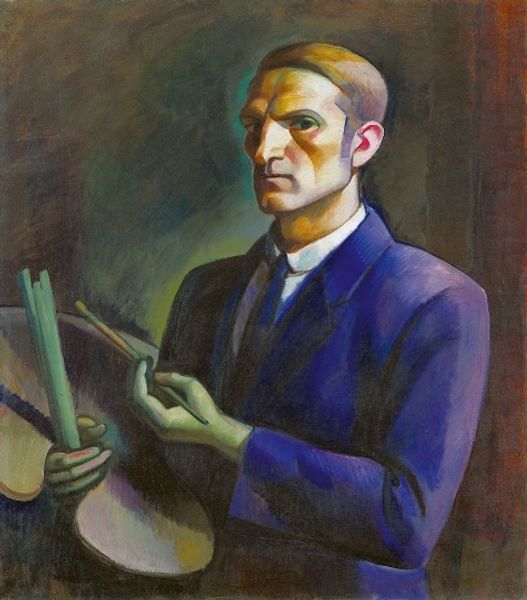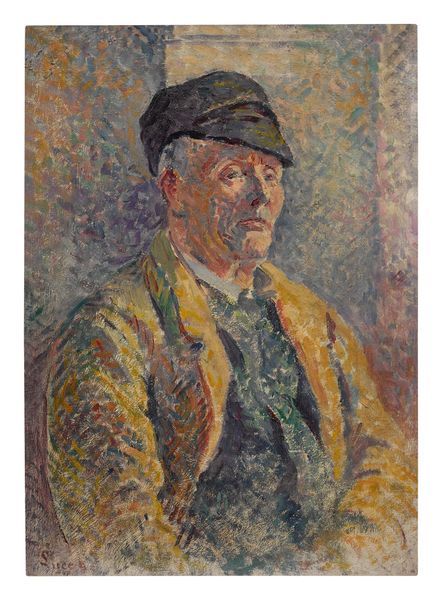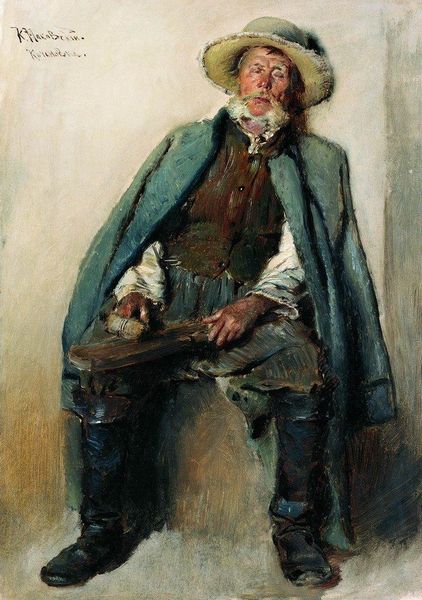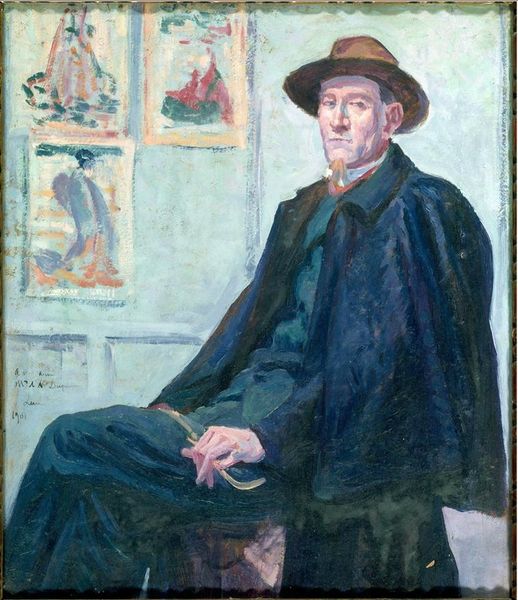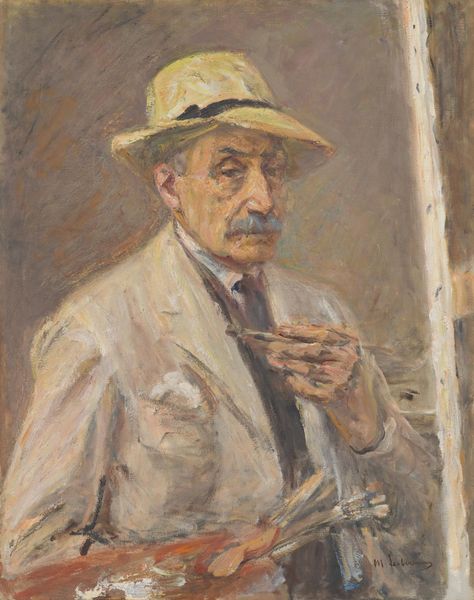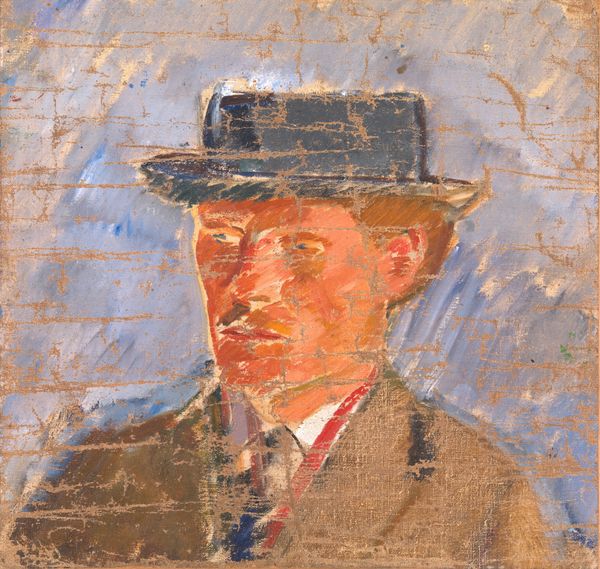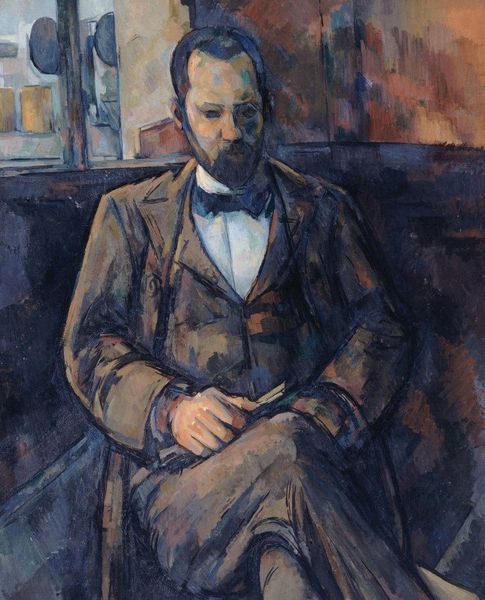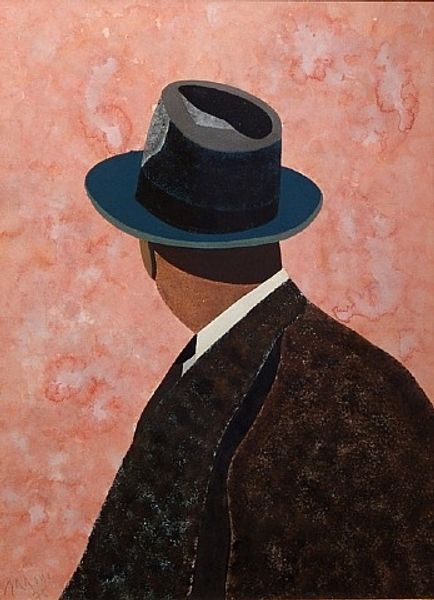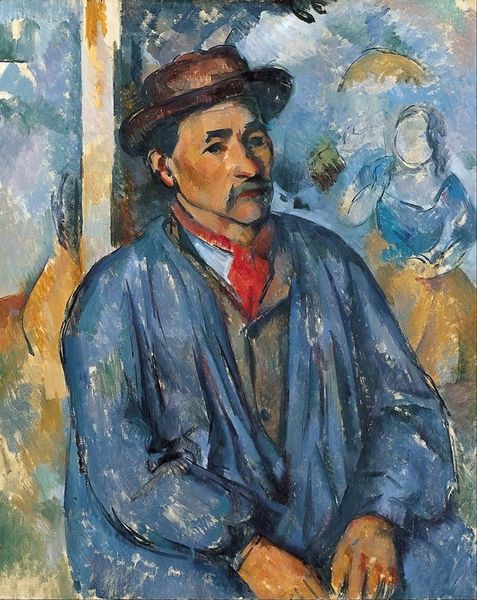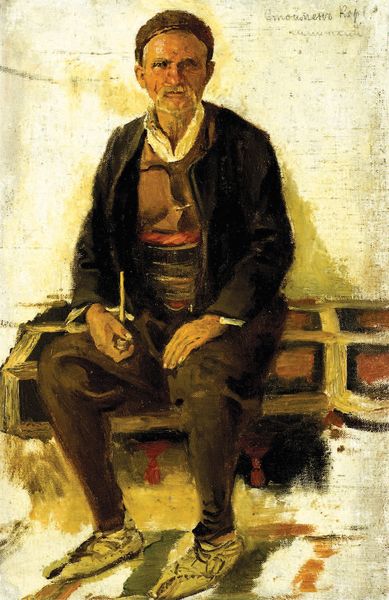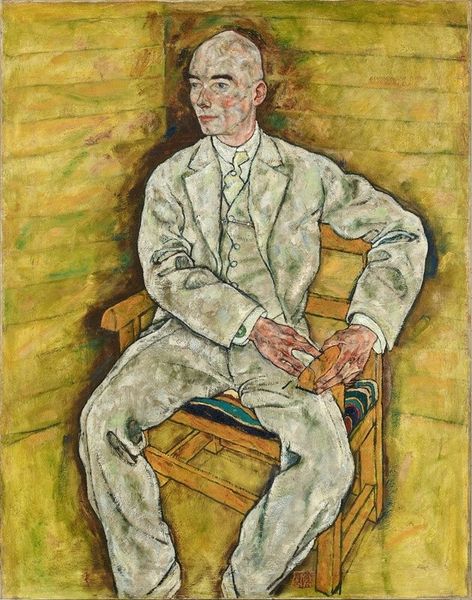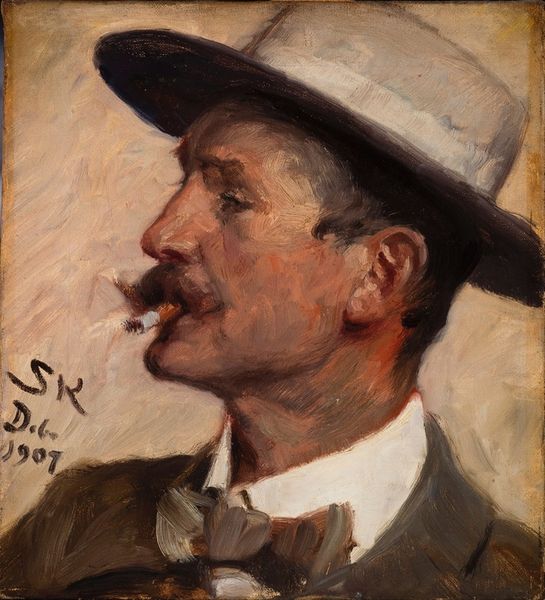
Copyright: Public domain
Curator: What catches my eye immediately is the textured surface—you can almost feel the thickness of the oil paint in Maximilien Luce's "Portrait of Félix Fénéon," created in 1901. Editor: Yes, that impasto is striking! It gives the portrait an almost sculptural quality, doesn't it? And the colors are much more subdued than I anticipated. There's a stillness, a quiet contemplation here. Curator: Fénéon was a prominent art critic and anarchist, so that introspective mood feels very deliberate. The hat, the pointed beard—these become almost symbols themselves, hinting at a very particular intellectual persona of the time. Editor: And how did the artist source those pigments, exactly? The dark hues of his clothing suggest natural dyes perhaps—something to research. We can talk more about the labor inherent in that kind of material processing. The making of art is so material! Curator: Absolutely, but I'm also struck by the visual language—the composition feels quite modern. The way Luce uses brushstrokes to capture light reminds me of earlier impressionist masters. It builds almost into a symbolic depiction of an artistic figure. Editor: Indeed! Also I see what looks like careful hatching within the brushwork used to render the fabrics; was this an element of established or evolving workshop practice? Understanding those things, will tell you volumes. Curator: But that context shapes how we read the piece! Editor: It's more about the material conditions from the time and the implications and cultural background which allow such materials to arrive to the painter for artistic representation and symbolic purposes! . Curator: Thinking of Fénéon's role as a critic—someone who shaped public perception of art—adds another layer of interpretation. He’s represented with the artist's mark! What is a powerful moment. Editor: It shifts the focus—from passive viewing to active material investigation. From a critical viewpoint instead on where did each and every element originate in its existence and utility? Where was labor being exacted during that chain from production, until becoming material for the artist. I will now reflect further upon materials from this and related pieces. Curator: It definitely gives me much to think about, in understanding symbols in this artwork now from a whole new background!
Comments
No comments
Be the first to comment and join the conversation on the ultimate creative platform.

